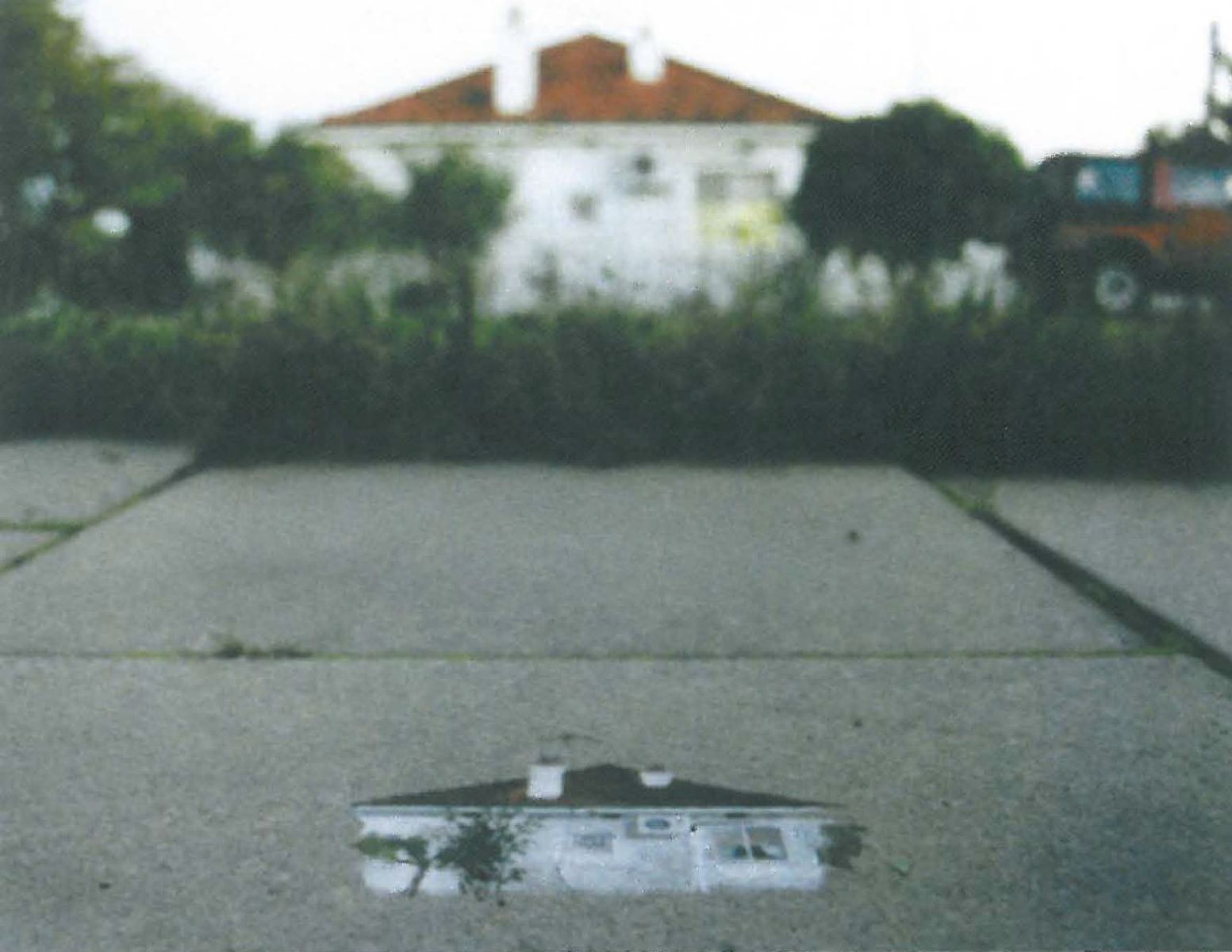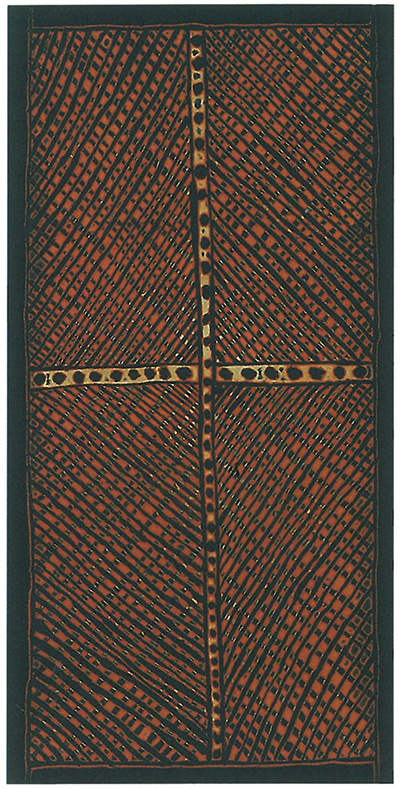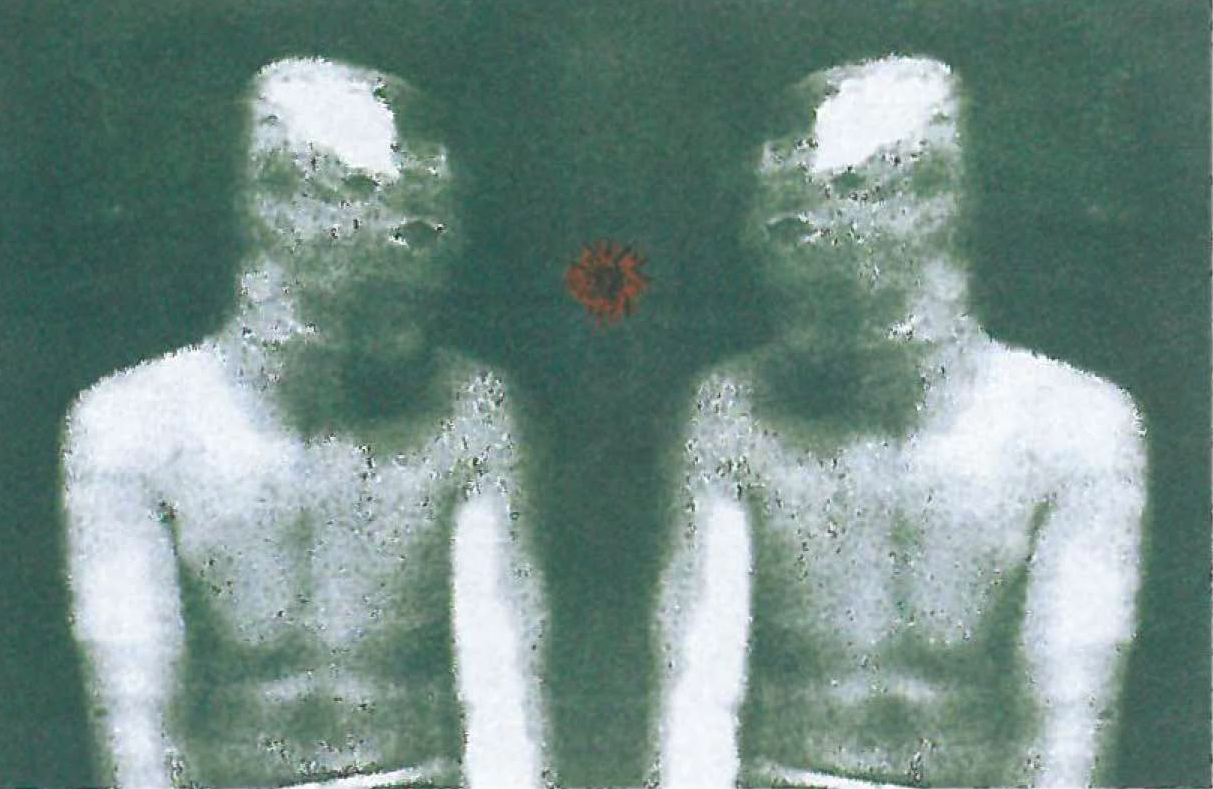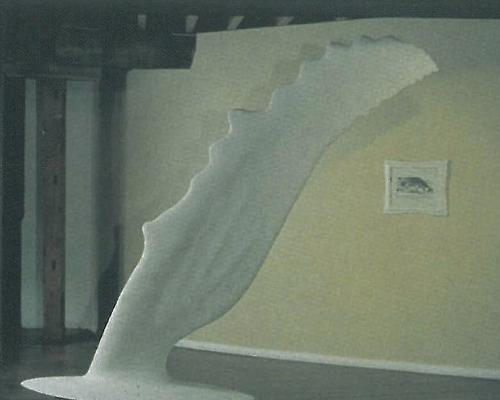
The annual Shell Fremantle Print Award at the Fremantle Arts Centre is a pivotal opportunity for printmakers from all over Australia to showcase their choicest work. It has been successfully running for 27 years. Two winners are chosen from a field of 100 entrants at various levels of practice from students through to teachers, amateurs to professional, incorporating all mediums justifiable within the realm of print. The winning prize is the $5000 major acquisitive, second is $2500 non-acquisitive and five others receive a vote of encouragement with a Commendation.
Poppy van Oorde-Grainger took out the major award with her outstanding digital print series apparently untitled. Seven collages that incorporated photo-images recording painted happenings, text and various other inclusions are bonded together by a realistic narrative stream. Stretching the boundaries of print-making the artist takes the literal to another level, producing a mini-documentary of her painting expeditions which occur in situ on suburban pathways.
Starting out by splattering a section of pavement with white paint the artist proceeds to paint a tiny watercolour rendition (no bigger than 10cm) of the dwelling in view. These tiny paintings are perfectly drawn miniatures and survive only as long as the weather permits, often washing away with the evening's rain. Along her journey the artist has chance meetings with the occupants of the houses, and other neighbours who pass by. Women and children offer her token gifts whilst other 'subject owners' attempt to find ways to possess the transient mementoes of their beloved castles (one woman has her son replace the slab with one from the garden so that she may display the masterpiece inside her house!).
The matter of fact storytelling, short and complementary to the images, reveals the simple and delightful tales of events that occur during the street productions. The items which she gathers, including a businessman's card and a handmade card from a girl are put together with digital photos and annotations to form a type of visual diary. Things are re-created, represented for the broader public, recycled and continuing along a stream of evolution. Van Oorde-Grainger imbues the artwork with a realism distilled from the community, and extracts an extraordinary essence from the ordinary, transporting an experiment from the street into the gallery perhaps overcoming the problem of bringing art to the public. Combining various media the work is holistic and humorous, not to mention unique.

Jilamara by Osmond Kantilla took out the $2500 non-acquisitive prize. Whilst the screen print of iron powder on cloth features typical patterns traditionally used in Tiwi ceremonial design, the work is uniquely pieced together and features a relationship between surface and applied design that gives the piece a third dimension. The applied designs could imply an attempted writing over of history suggesting the loss of previous traditions. Kantilla has researched ancient Tiwi designs and there are patterns he has used that are distinctively tangential to modern Tiwi patterning. The plasmid swirls, almost figurative, are pieced together with line work of triangles, concentric circles, rarrking and fans. The upper half of the piece is patched arbitrarily and married with a second whole piece that is continual in a repeated rhythm of lines and dots set within a grid. The unexpected juxtapositions and the unmatched hems innocently refute uniformity. There appears to be a complex story within these meaningful marks which allude to the history of a group of Islanders whose pre-white settlement experiences include trade interactions with other indigenous peoples such as the Macassans and Melanesians. Textiles and carvings from the Tiwi Islands are rich with such influence. Using traditional colours derived from iron powder pigments introduced in recent years by a visiting artist instead of bright artificial colours brings earthiness to the medium.
The golden sun-baked hues speak about the hot climate and open air environment, fire and the connection of the body to the earth, whilst the patterns generally used for ceremonies refer to ancestral tales and differentiate skin and clan grouping of the Tiwi people.
Tracey Puruntatameri's etching, also called Jilamara, is another Tiwi work assuring the appropriateness of printing for indigenous line marking. Featuring a simple linear design with a limited use of colour there is a pervading depth and warmth conveyed to the viewer.
Another Tiwi artist Francine Kantilla's etching Mimpurra is notably original in design. There were just a few other pieces which were inspiring. Heather Shimmen from Victoria had created a linocut on paper and organza which is sublime, and Paul Uhlmann's (W.A.) Hallucinations – A Fragment recalls Dante's poetry. Whilst some pieces bordered on the macabre the exhibition was as diverse and ambitious as always.













